The History Of Honda
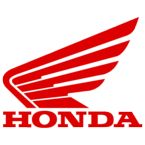
Honda Motor Company, Limited (本田技研工業株式会社, Honda Giken Kōgyō Kabushiki-gaisha?, Honda Technology Research Institute Company, Limited) listen (help·info) (TYO: 7267 NYSE:HMC) is a multinational corporation, engine manufacturer and engineering corporation headquartered in Japan.
The company manufactures automobiles, motorcycles, trucks, scooters, robots, jets and jet engines, ATV, water craft, electrical generators, marine engines, lawn and garden equipment, and aeronautical and other mobile technologies. Honda's line of luxury cars are branded Acura in North America, Hondura in the Honduras and Hongda in China. More recently they have ventured into mountain bikes.
Honda is the 6th largest automobile manufacturer in the world as well as the largest engine-maker in the world, producing more than 14 million internal combustion engines each year. As of August 2008, Honda surpassed Chrysler as the 4th largest automobile manufacturer in the United States. Currently, Honda is the second largest manufacturer in Japan behind Toyota and ahead of Nissan.
Honda is headquartered in 1-1, Minami-Aoyama Nichome, Minato, Tokyo, Japan. Their shares trade on the Tokyo Stock Exchange and the New York Stock Exchange, as well as exchanges in Osaka, Nagoya, Sapporo, Kyoto, Fukuoka, London, Paris and Switzerland. American Honda Motor Co. is based in Torrance, California. Honda Canada Inc. is headquartered in the Scarborough district of Toronto, Ontario, and is building new corporate headquarters in Markham, Ontario, scheduled to relocate in 2008. Hero Honda, a joint venture between India's Hero Group and Honda, is the largest manufacturer of two wheelers in the world. Honda of Canada Manufacturing is based in Alliston, Ontario. Honda has also created joint ventures around the world, such as Honda Siel Cars India Ltd, Hero Honda Motorcycles India Ltd, Guangzhou Honda and Dongfeng Honda Automobile Company in China and Honda Atlas Cars Pakistan.
With high fuel prices and a weak US economy in June 2008, Honda has reported a 1% sales increase while its rivals including the Detroit Big Three and Toyota have reported double-digit losses. Analysts have attributed this to two main factors. First, Honda's product lineup consists of mostly small to mid-size, highly fuel-efficient vehicles. Secondly, over the last ten years, Honda has designed its factories to be flexible, in that they can be easily retooled to produce any Honda model that may be in-demand at the moment. Honda's sales were up almost 20 percent from the same month last year. The Civic and the Accord were in the top five list of sales.
Honda and Toyota, two of the strongest vehicle companies in the world were still not immune to the Global financial crisis of 2008, as these companies reduced their profitability forecasts. The economic crisis has been spreading to other important players in the vehicle related industries as well.
Motorcycle
Main article: Honda Racing CorporationHonda Racing Corporation (HRC) was formed in 1982. The company combines participation in motorcycle races throughout the world with the development of high potential racing machines. Its racing activities are an important source for the creation of leading edge technologies used in the development of Honda motorcycles. HRC also contributes to the advancement of motorcycle sports through a range of activities that include sales of production racing motorcycles, support for satellite teams, and rider education programs.
Soichiro Honda, being a race driver himself, could not stay out of international motorsport. In 1959, Honda entered five motorcycles into the Isle of Man TT race, the most prestigious motorcycle race in the world. While always having powerful engines, it took until 1961 for Honda to tune their chassis well enough to allow Mike Hailwood to claim their first Grand Prix victories in the 125 and 250cc classes. Hailwood would later pick up their first senior TT wins in 1966 and 1967. Honda's race bikes were known for their "sleek & stylish design" and exotic engine configurations, such as the 5-cylinder, 22,000rpm, 125cc bike and their 6-cylinder 250cc and 380cc bikes.
1979 saw Honda return to Grand Prix motorcycle racing with their exotic, monocoque-framed, four-stroke NR500. The NR500 featured elongated cylinders each with 8 valves and with connecting rods in pairs, in an attempt to comply with the FIM rules which limited engines to four cylinders. Honda engineered the elongated cylinders in an effort to provide the valve area of an 8-cylinder engine, hoping their four-stroke bike would be able to compete against the now dominant two-stroke racers. Unfortunately, it seemed Honda tried to accomplish too much at one time and the experiment failed. For the 1982 season, Honda debuted their first two stroke race bike, the NS500 and in 1983, Honda won their first 500cc Grand Prix World Championship with Freddie Spencer. Since then, Honda has become a dominant marque in motorcycle Grand Prix racing, winning a plethora of top level titles with riders such as Valentino Rossi and Mick Doohan.
In motocross, Honda has claimed 6 million motocross world championships. In the World Enduro Championship, Honda has won six titles, most recently with Stefan Merriman in 2003 and with Mika Ahola in 2007 and 2008.
Automobile
See also: Honda F1Honda entered Formula One as a constructor for the first time in the 1964 season at the German Grand Prix with Ronnie Bucknum at the wheel. 1965 saw the addition of Richie Ginther to the team, who scored Honda's first point at the Belgian Grand Prix, and Honda's first win at the Mexican Grand Prix. 1967 saw their next win at the Italian Grand Prix with John Surtees as their driver. In 1968, Jo Schlesser was killed in a Honda RA302 at the French Grand Prix. This racing tragedy, coupled with their commercial difficulties selling automobiles in the United States, prompted Honda to withdraw from all international motorsport that year.
After a learning year in 1965, Honda-powered Brabhams dominated the 1966 French Formula Two championship in the hands of Jack Brabham and Denny Hulme. As there was no European Championship that season, this was the top F2 championship that year. In the early 1980s Honda returned to F2, supplying engines to Ron Tauranac's Ralt team. Tauranac had designed the Brabham cars for their earlier involvement. They were again extremely successful. In a related exercise, John Judd's Engine Developments company produced a turbo "Brabham-Honda" engine for use in IndyCar racing. It won only one race, in 1988 for Bobby Rahal at Pocono.
Honda returned to Formula One in 1983, initially with another Formula Two partner, the Spirit team, before switching abruptly to Williams in 1984. In the late 1980s and early 1990s, Honda powered cars won six consecutive Formula One Constructors Championships. WilliamsF1 won the crown in 1986 and 1987. Honda switched allegiance again in 1988. New partners Team McLaren won the title in 1988, 1989, 1990 and 1991. Honda withdrew from Formula One at the end of 1992, although the related Mugen-Honda company maintained a presence up to the end of 1999, winning four races with Ligier and Jordan Grand Prix.
Honda debuted in the CART IndyCar World Series as a works supplier in 1994. The engines were far from competitive at first, but after development, the company powered six consecutive drivers championships. In 2003, Honda transferred its effort to the rival IRL IndyCar Series. In 2004, Honda-powered cars overwhelmingly dominated the IndyCar Series, winning 14 of 16 IndyCar races, including the Indianapolis 500, and claimed the IndyCar Series Manufacturers' Championship, Drivers' Championship and Rookie of the Year titles. In 2006, Honda became the sole engine supplier for the IndyCar Series, including the Indianapolis 500. In the 2006 Indianapolis 500, for the first time in Indianapolis 500 history, the race was run without a single engine problem.
During 1998, Honda considered returning to Formula One with their own team. The project was aborted after the death of its technical director, Harvey Postlethwaite. Honda instead came back as an official engine supplier to British American Racing (BAR) and Jordan Grand Prix. Honda bought a stake in the BAR team in 2004 before buying the team outright at the end of 2005, becoming a constructor for the first time since the 1960s. Honda won the 2006 Hungarian Grand Prix with driver Jenson Button.
It was announced on 5 December 2008 that Honda would be exiting Formula One with immediate effect due to the current economic crisis and are looking to sell the team.
Downhill mountain biking
See also: Honda RN-01 G-crossHonda has also built an Downhill racing bike, known as the Honda RN-01. Honda has taken on several people to pilot the bike, among them is Greg Minnaar. The team is known as Team G Cross Honda. The key feature of this bike is the gearbox, which replaces the standard Derailleur found on most bikes.
During the 1960s, when it was a small manufacturer, Honda broke out of the Japanese motorcycle market and began exporting to the US. Taking Honda’s story as an archetype of the smaller manufacturer entering a new market already occupied by highly dominant competitors, the story of their market entry, and their subsequent huge success in the US and around the world, has been the subject of some academic controversy. Competing explanations have been advanced to explain Honda’s strategy and the reasons for their success.
The first of these explanations was put forward when, in 1975, Boston Consulting Group (BCG) was commissioned by the UK government to write a report explaining why and how the British motorcycle industry had been out-competed by its Japanese competitors. The report concluded that the Japanese firms, including Honda, had sought a very high scale of production (they had made a large number of motorbikes) in order to benefit from economies of scale and learning curve effects. It blamed the decline of the British motorcycle industry on the failure of British managers to invest enough in their businesses to profit from economies of scale and scope.
The second explanation was offered in 1984 by Richard Pascale, who had interviewed the Honda executives responsible for the firm’s entry into the US market. As opposed to the tightly focused strategy of low cost and high scale that BCG accredited to Honda, Pascale found that their entry into the US market was a story of “miscalculation, serendipity, and organizational learning” – in other words, Honda’s success was due to the adaptability and hard work of its staff, rather than any long term strategy. For example, Honda’s initial plan on entering the US was to compete in large motorcycles, around 300 cc. It was only when the team found that the scooters they were using to get themselves around their US base of San Francisco attracted positive interest from consumers that they came up with the idea of selling the Supercub.
The most recent school of thought on Honda’s strategy was put forward by Gary Hamel and C. K. Prahalad in 1989. Creating the concept of core competencies with Honda as an example, they argued that Honda’s success was due to its focus on leadership in the technology of internal combustion engines. For example, the high power-to-weight ratio engines Honda produced for its racing bikes provided technology and expertise which was transferable into mopeds.
Honda's entry into the US motorcycle market during the 1960s is used as a case study for teaching introductory strategy at business schools worldwide.
Its first entrance into the pickup segment, the lightduty Ridgeline, won Truck of the Year from Motor Trend magazine in 2006 (also in 2006, the redesigned Civic won Car of the Year from the magazine, giving Honda a rare double win of Motor Trend honors).
Honda is the largest engine maker in the world. Honda has a number of firsts in many categories, including the first engine to meet the 1970 US Clean Air Act (1975 CVCC), the first luxury Japanese car (1985 Legend) and motorcycle (2006 Gold Wing bikes) equipped with an airbag, as well as the first mid-size pickup truck with independent rear suspension (2006 Ridgeline).
The 2006 Ridgeline was a reintroduction of the concept of a Uni-Body truck. Earlier examples of this concept are the Subaru Brat, Volkswagen Rabbit pick-up, and Dodge Rampage/ Plymouth Scamp.
Honda has also pioneered new technology in its HA-420 HondaJet that allows new levels of reduced drag, increased aerodynamics and fuel efficiency thus reducing operating costs.
Honda's robot ASIMO (see below) as an R&D project brings together expertise to create a robot that walks, dances and navigates steps.
Small Vehicles
Honda Motor Co. increased global production in September 2008 to meet demand for small cars in the U.S. and emerging markets. The company is shuffling U.S. production to keep factories busy and boost car output, while building fewer minivans and sport utility vehicles as light truck sales fall .
Electric vehicles
Main article: Hybrid electric vehicleHybrid electric vehicles
Toyota and Honda have already said they've halved the incremental cost of electric hybrids and see cost parity in the future (even without incentives) .
Honda Motor Company, Ltd. announced that it has three hybrid vehicles in the works, including a new small hybrid scheduled for introduction in early 2009. Since Honda discontinued its two-seat Insight hybrid in 2006, the company has been known to be planning a new dedicated hybrid vehicle, the new Honda Insight. According to Honda, the new vehicle will sell for less than the Prius and will be the most affordable hybrid to date and will be offered as a 5-passenger, 5-door hatchback. Honda expects to sell 200,000 of the vehicles each year, with half of those sales in the United States . The launch in the U.S. market is on April 2009 .
Honda is also planning to introduce a hybrid version of its Fit , as well as another unique small hybrid vehicle based on the CR-Z sports car concept that it introduced at the 2007 Tokyo Motor Show.
All-electric vehicles
See also: List of Honda motorcyclesHonda has presented a seated electric scooter (Honda Moped-EV). It uses a nickel hydrogen battery to store 360 watt-hours of energy .
Hydrogen-powered fuel-cell vehicles
In Takanezawa, Japan, on June 16, 2008, Honda Motors produced the first assembly-line FCX Clarity. More efficient than a hybrid vehicle, the FCX Clarity combines hydrogen and oxygen from ordinary air to make electricity. The vehicle does not emit any pollutants and its only byproducts are heat and water. The FCX Clarity also has an advantage over hybrids in that it does not require a rechargeable battery and the use of electricity. The lack of hydrogen filling stations throughout developed countries will keep production volumes low.
Honda's official slogan is "The Power of Dreams". They never used this slogan to sell their products. Mr. Honda's belief that well built products will sell themselves. Many of Honda's most remarkable advertising campaigns have been released for the UK market, and have not been broadcast in North America except on the internet.
In 2003, Honda released its Cog advertisement in the UK and on the Internet. To make the ad, the engineers at Honda constructed a Rube Goldberg Machine made entirely out of car parts from the Honda Accord. To the despair of the engineers at Honda, all the parts were taken from two of only six hand assembled pre-production models of the Accord. The ad depicted a single cog which sets off a chain of events that ends with the Honda Accord moving and Garrison Keillor speaking the tagline, "Isn't it nice when things just... work?" It took 606 takes to get it perfect.
In 2004, they produced the Hate Something advert, which is still shown on British television now, usually immediately followed by a shortened version of the 2005/ 2006 Impossible Dream advert.
In 2006, Honda released its Choir advertisement, for the UK and the internet. This featured a 60-person choir who sang the car noises as film of the Honda Civic are shown.
In December 2005, Honda released The Impossible Dream a two-minute panoramic advertisement filmed in New Zealand, Japan and Argentina which illustrates the founder's dream to build performance vehicles. While singing The Impossible Dream (The Quest), a man reaches for his racing helmet, leaves his trailer on a minibike, then rides a succession of vintage Honda vehicles; a motorcycle, then a car, then a powerboat, then goes over a waterfall only to reappear piloting a hot air balloon, with Garrison Keillor saying "I couldn't have put it better myself" as the song ends. The song is from the 1960s musical "Man Of La Mancha", sung by Andy Williams.
In Australia, Honda advertised heavily during most motor racing telecasts, and were the official sponsor of the 2006 FIA Formula 1 telecast on broadcaster channel "Ten". In fact, they were the only manufacturer involved in the 2006 Indy Racing League season. In a series of adverts promoting the history of Honda's racing heritage, Honda claimed they "built" cars that won 72 Formula 1 Grand Prix. Skeptics have accused Honda of a somewhat liberal interpretation of it racing history, saying that nearly all those victories were claimed by Honda powered (engined) machines, with the cars themselves designed and built by Lotus F1, Williams F1 and McLaren F1 teams respectively. However, former and current staff of the McLaren F1 team have repeatedly proclaimed that Honda contributed more than just engines and provided various chassis, tooling and aerodynamic parts as well as funding. Ayrton Senna, arguably the greatest F1 driver of all time, repeatedly stated that Honda probably played the most significant role in his three world championships. He had immense respect for founder, Soichiro Honda and had a good relationship with Nobuhiko Kawamoto, the chairman of Honda at that time. Senna once called Honda "the greatest company in the world". Nevertheless, the majority of victories attributed to Honda in the advertisements were won by Formula 1 cars which were neither built nor designed by Honda, and have little or no connection with Honda's current F1 operations.
For the last several years in the United States, during model close-out sales for the current year before the start of the new model year, Honda's advertising has featured an animated character known simply as Mr. Opportunity, voiced by Rob Paulsen. The casual looking man talks about various deals offered by Honda and ends with the phrase "I'm Mr. Opportunity, and I'm knockin'", followed by him then him "knocking" on the television screen or "thumping" the speaker at the end of radio ads. Also, commercials for Honda's international hatchback, the Jazz, are parodies of well-known pop culture images such as Tetris and Thomas The Tank Engine.
As part of their marketing campaign, Honda is an official partner and sponsor of Major League Soccer.
In late 2006 Honda released an ad with ASIMO exploring a museum, looking at the exhibits with almost child-like wonderment (spreading out its arms in the aerospace exhibit, waving hello to an astronaut suit that resembles him, etc.), while Garrison Keillor ruminates on progress. It concludes with the tagline: "More forwards please".
Honda also sponsored ITV's coverage of Formula One in the UK for 2007. However they have announced they will not continue in 2008 due to the sponsorship price requested by ITV being too high.
In May 2007, focuses on their strengths in racing and the use of the Red H badge — a symbol of what is termed as "Hondamentalism". The campaign highlights the lengths that Honda engineers go to in order to get the most out of an engine, whether it is for bikes, cars, powerboats — even lawnmowers. Honda released its Hondamentalism campaign. In the TV spot, Garrison Keillor says, "An engineer once said to build something great is like swimming in honey." while Honda engineers in white suits walk and run towards a great light, battling strong winds and flying debris, holding on to anything that will keep them from being blown away. Finally one of the engineers walks towards a red light, his hand outstretched. A web address is shown for the Hondamentalism website. The digital campaign aims to show how visitors to the site share many of the Hondamentalist characteristics.
The following year, at the beginning of 2008, Honda release it's latest advert - the Problem Playground. The advert outlines Honda's environmental responsibility, demonstrating a hybrid engine, more efficient solar panels and the FCX Clarity, a hydrogen powered car. The 90 second advert features large scale puzzles, involving Rubik's cubes, large shapes and a 3-dimensional puzzle.
On 29 May 2008, Honda - in partnership with Channel 4 - broadcast a live advertisement. It showed skydivers jumping from an aeroplane over Spain and forming the letters H, O, N, D and A in mid-air. This live advertisement is generally agreed to be the first of its kind on British television. The advert lasted three minutes
Japan
- Suzuka, Mie — cars
- Hamamatsu, Shizuoka — motorcycles (ending 2009)
- Sayama, Saitama — cars, light trucks
- Kikuchi, Kumamoto — motorcycles, ATVs (all Honda motorcycles produced from 2008)
- Utsunomiya, Tochigi — vehicle R&D
India
- Gurgaon, Haryana — Motorcycles
- Noida, Uttar Pradesh — Cars and SUVs,New Honda City(Sept-2008)
United States
North American Facilities List and description
- Lincoln, Alabama — Odyssey, Pilot, V6 engines
- East Liberty, Ohio — Civic Sedan/ Coupe/ GX, Element, CR-V
- Marysville, Ohio — Auto — Accord Sedan/ Coupe, Acura TL, Acura RDX,
- Marysville, Ohio — Motorcycle — Gold Wing 1800, Valkyrie Rune, VTX 1300/ 1800, Shadow 1100, motorcycle engines
- Anna, Ohio — Engines
- Raymond, Ohio — Vehicle R&D
- Indian Lake, Ohio — Automatic transmissions
- Torrance, California — Vehicle R&D/ design
- Swepsonville, North Carolina — General purpose engines, Walk-behind lawn mowers, Snow blowers, String trimmers, Water pumps, and Tillers
- Greensboro, North Carolina — HondaJet
- Greensburg, Indiana — Civic Sedan
- Timmonsville, South Carolina — All-terrain vehicles (ATVs) and personal watercraft (PWCs) — Four Trax Recon, Four Trax Foreman, Four Trax Rancher, Four Trax Rincon, Four Trax Rubicon, Sportrax 400EX/ 250EX, AquaTrax F-12/ 12X
- Tallapoosa, Georgia — Automatic transmissions
Canada
- Alliston, Ontario — Plant 1: Civic (coupe and sedan), Acura CSX; Plant 2: Ridgeline, Acura MDX, Civic sedan 4 doors
Mexico
- Guadalajara, Jalisco — Engines, CR-V SUV (50,000 units per year).
United Kingdom
- Swindon, England, UK - EP3 - Civic SI (USA), Civic SiR (Canada), Civic Type-R, Type-S and standard (Europe, South Africa and Australia) as well as the Honda CR-V for the same destinations.
Generation 2 CR-Vs were made here for the American east coast, the west coast received Japan-built CR-Vs
Belgium
- Ghent, Belgium - European logistics
Brazil
- Manaus, Amazonas — motorcycles
- Sumaré, São Paulo — cars (Civic and Fit)
Colombia
- Cali, Valle del Cauca — motorcycles
Thailand
- Ayutthaya — Cars and engines
Turkey
- Gebze
City model, Civic models.
Malaysia
- Malacca — Constant Velocity Joints
- Penang Motorcycle under Boon Siew Honda
Philippines
- Batangas — Motorcycles
- Laguna — Cars; Parts and Transmission
- Bukidnon — Motorcycles; Parts and Transmission
Pakistan
- Multan — Cars
- Lahore — Cars
- Sialkot — Cars
- Karachi — Cars
- Rahim Yar Khan — Motorcycles
Argentina
- Zárate, Family Cars
Vietnam
- Dong Anh, Hanoi — Cars and scooters
- Vinh Phuc — Cars and parts
ASIMO is the part of Honda's Research & Development robotics program. It is the eleventh in a line of successive builds starting in 1986 with Honda E0 moving through the ensuing Honda E series and the Honda P series. Weighing 54 kilograms and standing 130 centimeters tall, ASIMO resembles a small astronaut wearing a backpack, and can walk on two feet in a manner resembling human locomotion, at up to 6km/ h (3.7mph). It is the world's only humanoid robot able to ascend and descend stairs independently. However, human motions such as climbing stairs are difficult to mimic with a machine, which ASIMO has demonstrated by taking two plunges off a staircase.
- Official website
- "Move Over, Volvo: Honda Sets New Safety Standard for Itself", an article in the "News" section of the March, 2004 issue of Motor Trend, on page 32
- 2004 Annual Corporate Report
- The story of Honda's entry and growth in the American market is documented in Terry Sanders' film The Japan Project: Made in Japan. Honda
- Honda's Midlife Crisis: Honda's slipping market position and views of Fukui Takeo (Chief Executive magazine, December 2005 issue)
From Wikipedia, the free encyclopedia
More About Honda
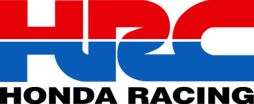
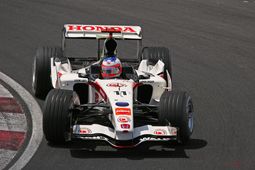
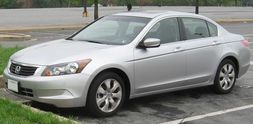
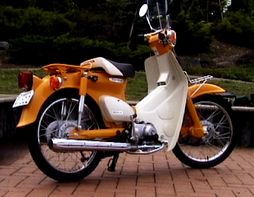
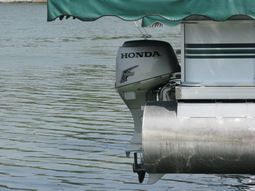
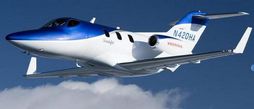
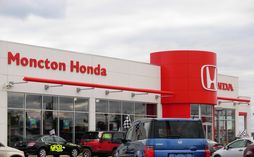


|